Monday, September 22, 2014
AC Fly Fishing - Summer on the Lower Sacramento Video
This summer I had the opportunity to film my buddy, Anthony Carruesco, guiding on the Lower Sacramento river. The Lower Sac is an amazing fishery and provides fly angling opportunities 365 days a year. Even in the dead of summer, fishing on this river can be phenomenal and in the few days I filmed, we experienced just that. There were lots of hookups and even a few hogs found their way into the net! However, the Lower Sac can be a humble experience if you don't know the river like Anthony does. He knows where your flies need to be at any flow, any condition, and/or any season. Do yourself a favor and book him for a trip! You won't be disappointed!
AC Fly Fishing
I'm hoping to make this a 4 part series chronicling the 4 seasons on the Lower Sacramento, but we'll see! Lots of other video project ideas in the works as well!
Stay fly,
T
Monday, May 12, 2014
Stanislaus Fly Fishers - DamNation Screening
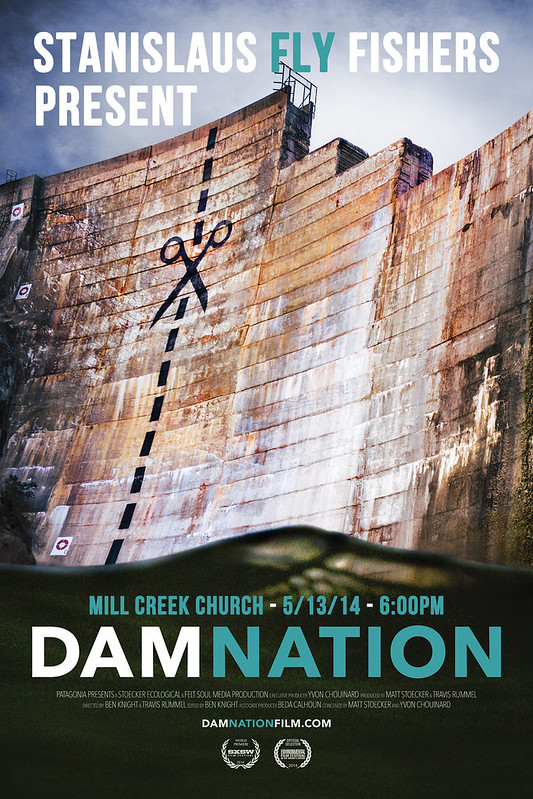
On 5/13/14, the Stanislaus Fly Fishers will be hosting a screening of DamNation. This film challenges the notion that dams, the once prized feats of engineering and human achievement, are in fact crippling environmental ecosystems and killing off once plentiful and abundant salmon and steelhead runs by blocking access to miles and miles of prime spawning grounds. An old theory that "the damage is already done" and that these species can't rebound by dam removal, is shown to be proven wrong is this film as well. As fly fisherman, our thoughts and actions simultaneously fluctuate with the rivers we fish. For myself, this ultimately means that many of my days on the water change with the season and also unfortunately with the scheduled flow releases from our dams nearby. I've often pondered what life was like here in our Central Valley when our rivers ran free. In the fall, when I watch what few salmon are able to navigate the seemingly unnavigable local rivers, I think back to my childhood when my dad would take us to the Knight's Ferry bridge to watch the salmon spawn below. I would always stand there in awe of these marvelous creatures and only now as I've grown older does my appreciation for them deepen. There are countless threats against these fish, but undoubtedly the damming of our rivers were the first proverbial shot fired. If you think about rivers as the veins and arteries of this earth, than unequivocally, dams are the plaque build-up, that over time painfully leads toward a slow death. Just look at anadromous fish population records over time if you don't believe me. Sometimes a metaphorical quadruple bypass is needed and dams should come out. The time for this action is now, before we lose what we barely have left. Come to our screening of DamNation and see for yourself what our future could have in store if the right actions are taken!
Details:
When:
May 13, 2014
6:00 PM
Where:
Mill Creek Church
147 Auto Center Ct, Modesto, CA 95356
Cost:
FREE! (Dinner will be optional for a small cost)
Friday, April 18, 2014
Anadromous Rods - Rivers of Recovery Fly Rod Build
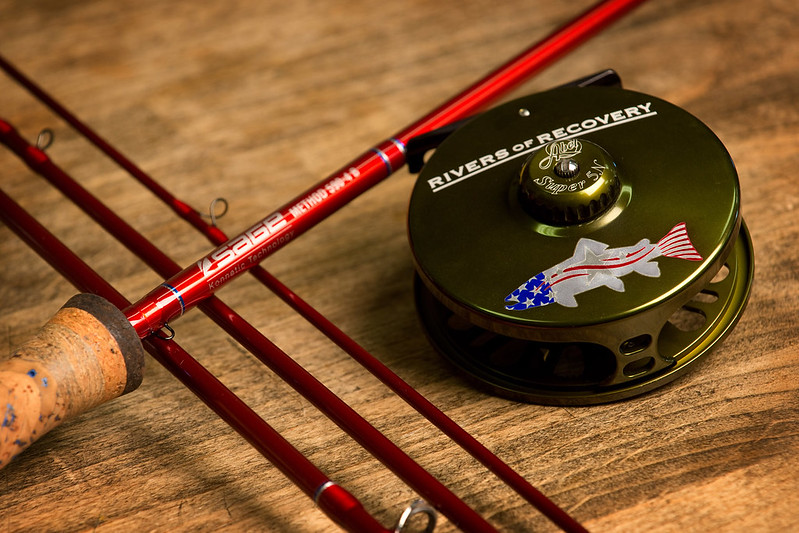
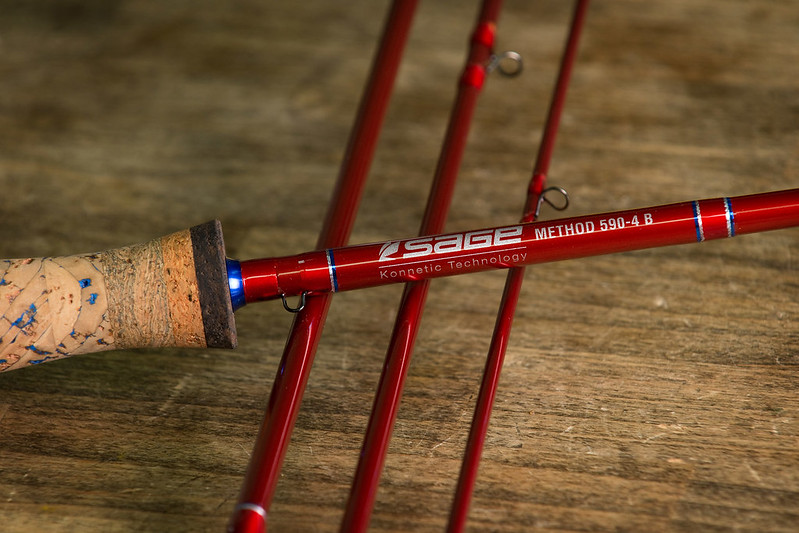
I had the pleasure of teaming up with Holland Ney of Anadromous Rods and filmed the process of building a custom rod from start to finish. Unlike just a normal build though, there were many intricate facets added to this rod and well thought out design features. Holland is a master at his craft and it was a blast to witness the high attention to detail he put into this rod as well as all the rods he builds.
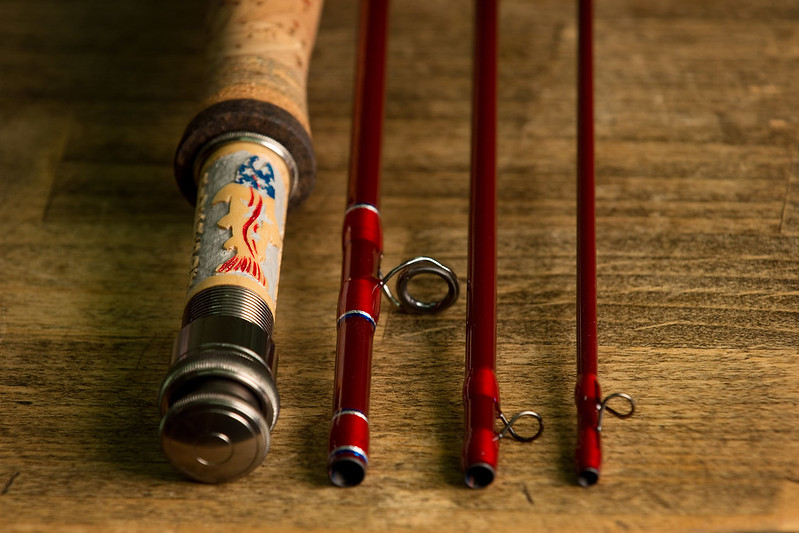
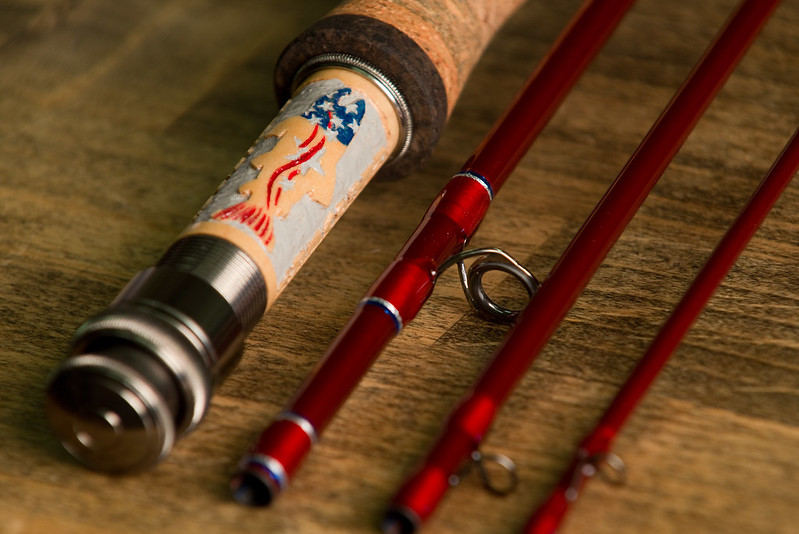 The canvas that was to be built upon was a Sage Method 590-4 and because of the fact it is a red blank it fit perfectly with the Rivers of Recovery theme. Rivers of Recovery also donated a custom matching Abel reel to cap off the build. The rod and reel were made to be auctioned off at the Modesto Fly Fishing Film Tour on April 17th, 2014 and one lucky soul walked out with one of the best setups you could dream of!
The canvas that was to be built upon was a Sage Method 590-4 and because of the fact it is a red blank it fit perfectly with the Rivers of Recovery theme. Rivers of Recovery also donated a custom matching Abel reel to cap off the build. The rod and reel were made to be auctioned off at the Modesto Fly Fishing Film Tour on April 17th, 2014 and one lucky soul walked out with one of the best setups you could dream of!Check out Anadromous Rods on Facebook!
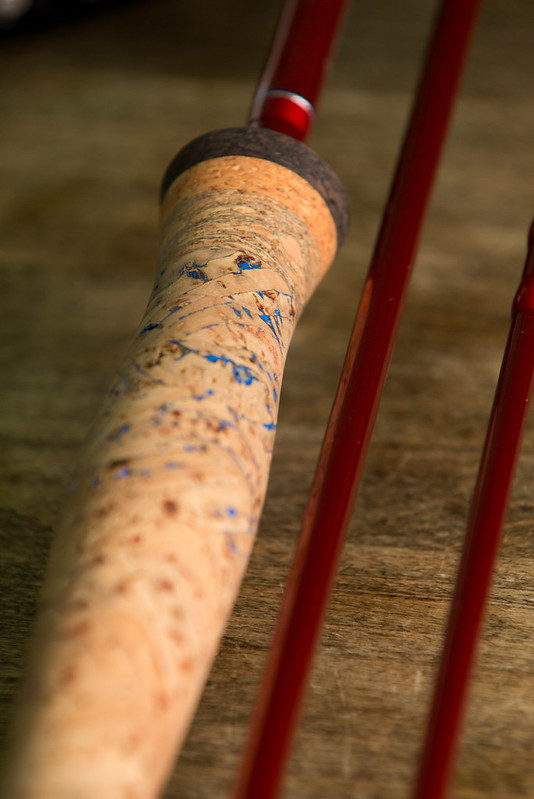
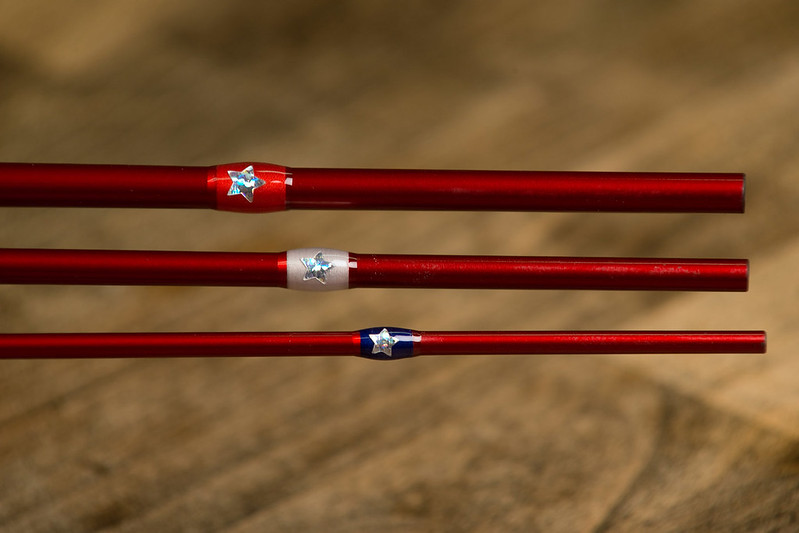
Stay fly,
T
Saturday, March 22, 2014
DIY Drift Boat/Raft Anchor

So this little project started off because simply because I can be forgetful at times. I really didn't need a new anchor, nor was I thinking of upgrading, but after a float one day on a local river I just totally forgot to pick mine up after I took it off at the take out.....
Well obviously then I needed a new one, so I started looking at prices online and saw that a replacement would run me $80+! I figured it couldn't be all that hard to make one, so I set out to do just that. Let me preface that to build an anchor requires some know-how or at least have friends with the capabilities. I saw some anchors that had steel housings filled with lead and this sounded like a good route to go for multiple reasons. Simply put, it would last longer since straight lead anchors have a tendency to chip away in the rocky river bottom. Plus, all those lead chips pollute the river, so having a steel case would eliminate that from happening.
Being that I am not a welder, and don't happen to be very good at it, I talked to Daniel and he said he could make that part happen. As an added bonus, he had some scrap steel from a job site that would fit the bill for the casing. For the lead fill, that can be the expensive part if you don't have access to scrap. Luckily, my dad is a member of a gun range that allows foraging for scrap bullets and casings. It just so happens too that he recasts lead bullets and reloads his own rounds, so we have plenty of scrap lead lying around. The last part I needed was a ring eye bolt. After a quick trip to the local hardware store and $6 later, that part was taken care of. Now that I had figured out the logistics and acquired the materials, the build came together.
1. Scrap steel ready to be cut.
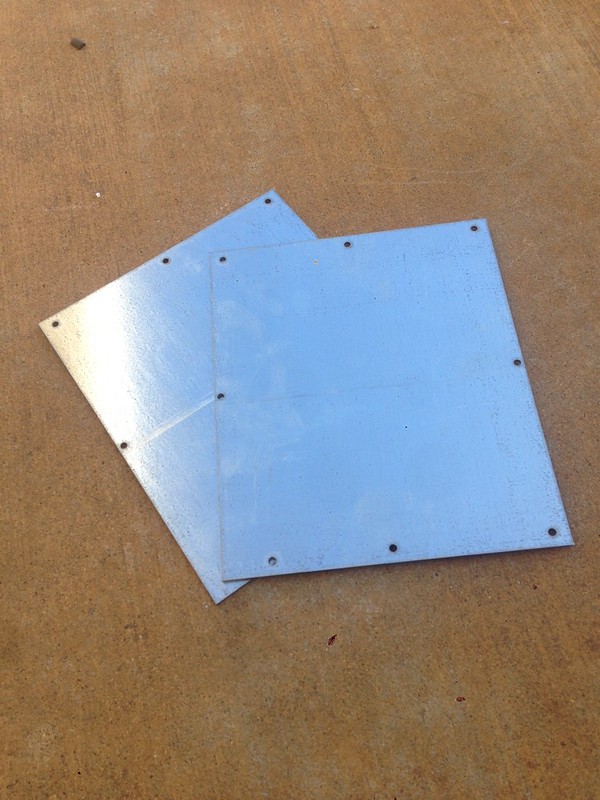
2. Cut steel and tack weld in place. (The measurements for this anchor were 5.5" x 5.5" for the top square, 3" x 3" for the bottom square, and 4" tall. This configuration yielded a 28lb anchor.)
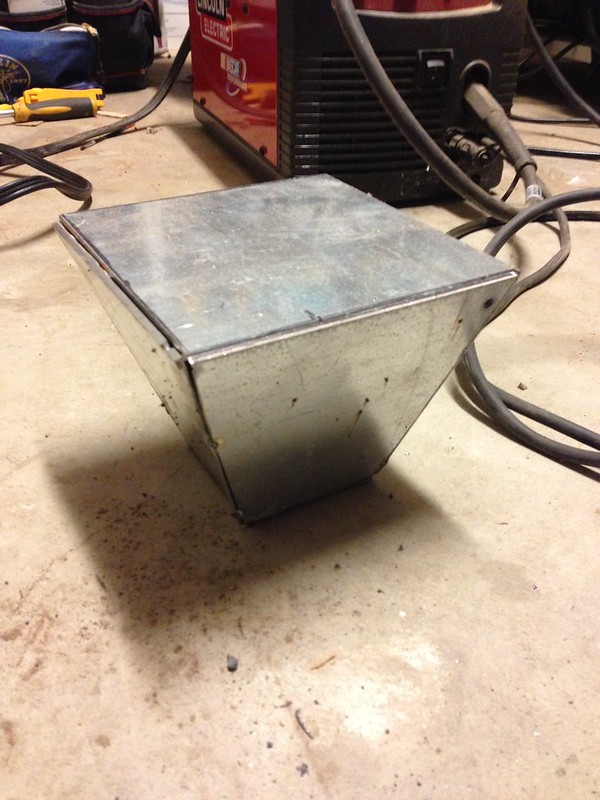
3. Weld up all of the sides.
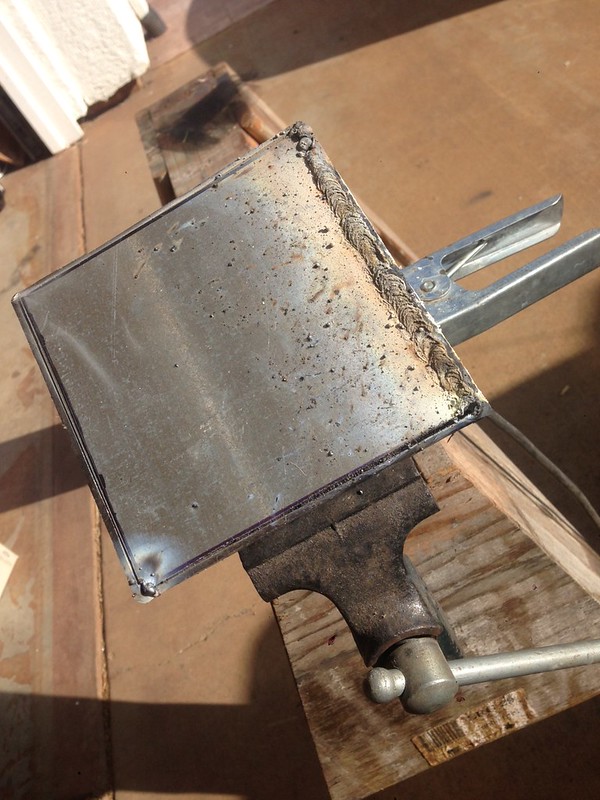
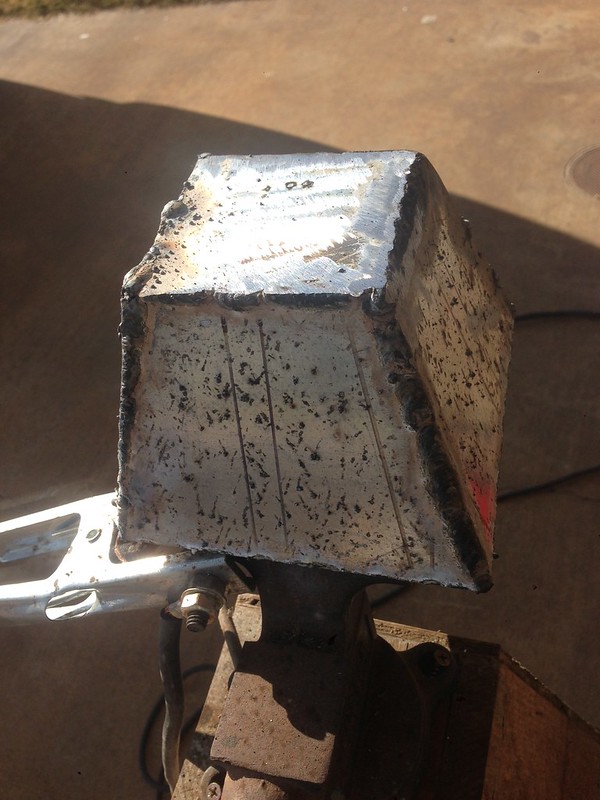
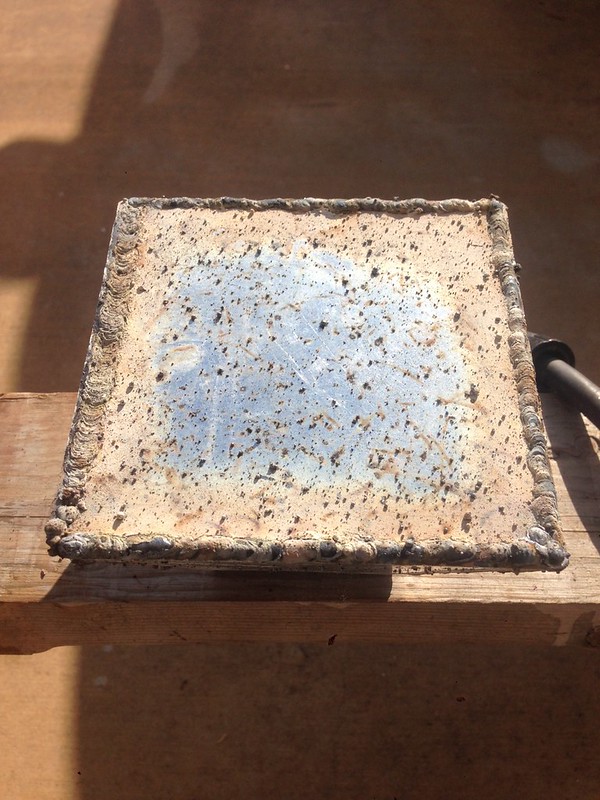
4. Use a grinder to smooth out the rough edges and welds.

5. Drill a fill hole and start smelting the scrap lead.
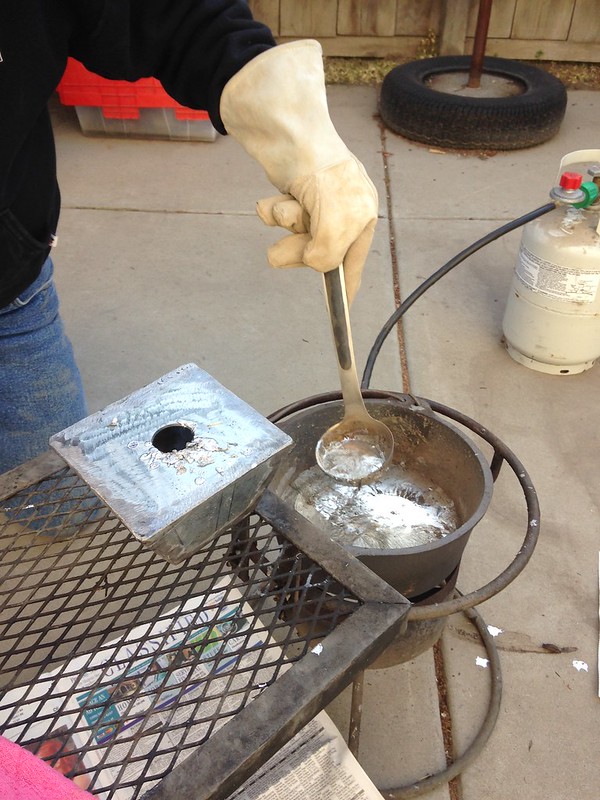
6. Fill anchor with hot lead. (Make sure to be very safe and use protective equipment.)

7. Place the ring eye bolt in the lead while it is still hot.

8. Remove the excess lead and let it all cool and harden into place.
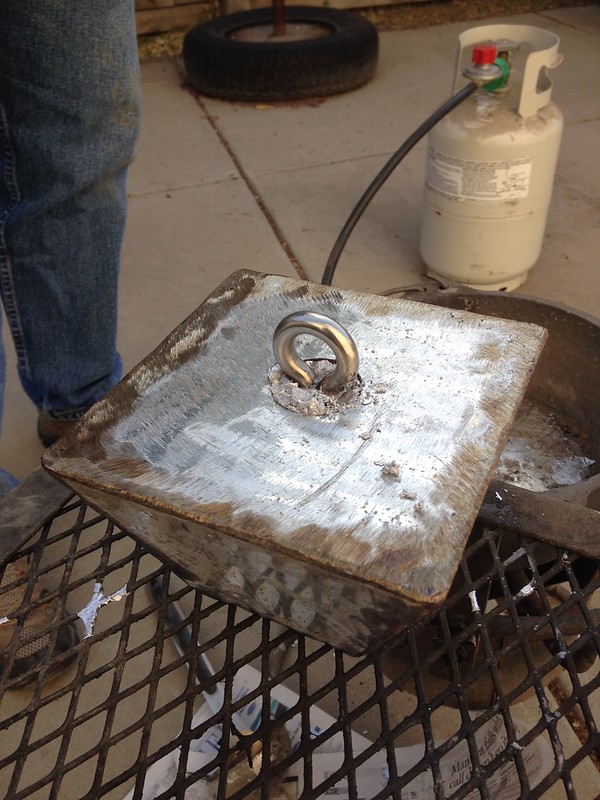
9. Ready to hit the water!

All in all, this build wasn't terribly difficult if you have access to all the right tools and materials. Basically most of this anchor was made from all recycled materials that were essentially trash before they were repurposed. As far as cost goes, I only ended up having to buy a ring eye bolt and that was it. So far, this new anchor has been on around a half dozen or so floats and has performed and held up perfectly. If you're in need of a new anchor or want to upgrade, think about building one before you buy!
Stay fly,
T
Wednesday, March 12, 2014
Mercer's Missing Link

After a solid year of "testing" this fly, I've realized its potential and it has become a go-to staple in my box. It has effectively replaced quite a few flies that I used to throw and those that haven't tried it, need to!
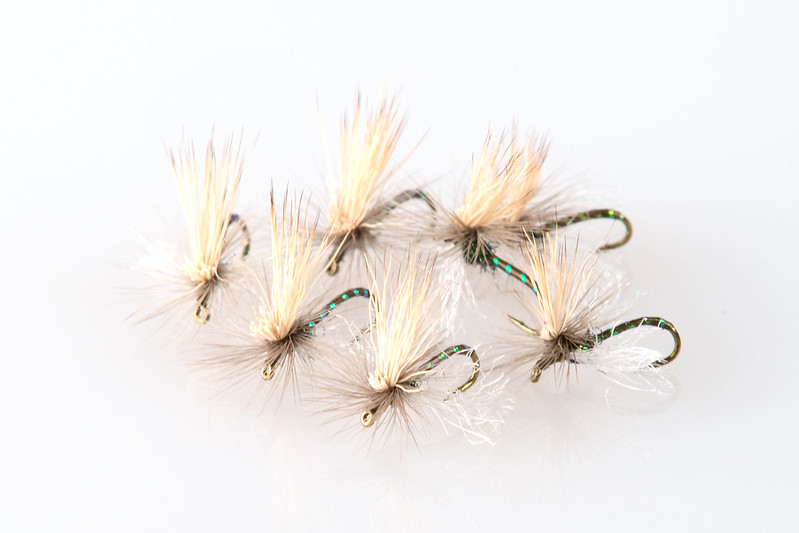
The Missing Link was developed by Mike Mercer and was a variation of Ralph Cutter's EC Caddis. The EC Caddis is an excellent pattern in its own right, but the changes made by Mercer in the Missing Link make the later the best of the two, in my opinion. Originally developed as a sort of caddis cripple imitation, the Missing Link has evolved into a pattern that can be utilized in many different hatches. I believe that it's many features helps it be effective in all those different circumstances. It utilizes the wing of an Elk Hair Caddis, the hackling of a Parachute Adams, spent wings like a spinner, and a slim body like an emerger. I have fished it in both caddis and mayfly hatches with success and even fished it a few times where there wasn't a hatch and got a few fish to come eat it. It truly is that effective sometimes.
Anyway, here's a short video I put together of the tie for those interested in adding some to their box. Truth be told, I now carry about 6 dozen Missing Links in various sizes and colors!
Click HERE and check out our friend AC Fly Fishing's latest post and look closely to see what fly is in the mouth of the fish in the photo. I'm sure you can guess what it is!
Materials:
Hook: Tiemco 100
Thread: Uni 8/0 Olive Dun
Rib: Pearl Flashabou or Pearl Krystal Flash
Thorax: Ice Dub - Peacock
Spent Wings: McFlylon, Antron, or Z-Lon
Hackle: Dun
Wing: Elk Hair
Stay fly,
T
Saturday, December 28, 2013
Marijuana & Metalheads
Last winter I was fortunate to do a multi-day float down one of California's most historic steelhead and salmon rivers, the Eel. Although we never felt a pull, it was an amazing place to be and at the same time very disheartening viewing the devastation man has caused to that ecosystem. There were many hillsides where you would look up and see evidence of deforestation from the logging industry, which subsequently loosened the fragile soil and sediment that has found it's way into that river. To just say the siltation in that river is bad is in fact a huge understatement. The tent I used on that trip still has Eel River silt in it that I've deemed near impossible to eradicate. It's wild how quickly a solid rain can muck up that system. I recall a different trip in which I was fishing a run on the Eel, it started to rain, and by the time I finished the run the river had completely gone chocolate.
Although the effects of logging in that area are still being felt, there is a new epidemic looming and already making its presence felt in the State of Jefferson. It's pot farming. Growing marijuana in the emerald triangle isn't a new phenomena by any means, but it appears in recent times to be skyrocketing, and there are estimates that there is $7 BILLION worth of marijuana coming out of that area.
With the avenue of Prop 215 passing in 1996 legalizing medical marijuana and the subsequent growth of marijuana culture, there is a huge demand for the product. With that comes also an increasing number of people wanting to become suppliers (i.e. illegal and/or legal growers) and an influx of Mexican cartels growing in the area as well. Check out this video and it will show via Google Maps just a small sample of how many farms are popping up in the last few years.
Albeit is a tempting way to make a substantial amount of money and it can be done in a relatively short season, it is creating huge detrimental effects on the ecosystems in which the crops are farmed. Pesticides and fertilizers used for growing can get into the systems resulting in poisoned water. Road and farm clearing ands more to the already terrible siltation problem. Irrigation lines placed in small spawning tributaries can sometimes suck up so much water that it leaves it dry. Not to mention the inherent danger of working one of these farms. Do a quick search on marijuana murders in the area and you'll find a treasure trove of violent stories. There's money in this product and many are more than willing to risk their lives for it.
So what needs to be done? Like anything, there are always two sides. If marijuana and marijuana farming is legalized in California, it would be an interesting unfolding of events. From a simple economic standpoint, by legalizing it, commercialized interests would get involved, produce the product on a large scale, and subsequently the price would plummet. If this did happen, one would believe that these Mexican cartels and local farmers wouldn't continue their small-scale farms due to the fact that it would not make financial sense for them and they would no longer see the exorbitant profits they once enjoyed. What would happen if things remain the same and marijuana is still illegal? For starters, there is hope that maybe the market will soon become saturated by itself due to the already increasing influx of farming and the price of pot will plummet on it's own. Then again though, where is that proverbial point at which supply greatly exceeds demand and starts causing a huge price decrease? And then once that happens, do these farmers just up and stop producing marijuana? One thing is for certain though, marijuana use and farming is ingrained in part of the culture in the emerald triangle. Legal or not, those types of people will always continue to grow. It's hard to tell what the future holds for both the marijuana industry and steelhead in that area. I guess only time will tell. Undoubtedly though, this is a beautiful area and it needs to be protected.
Stay fly,
T
Tuesday, December 3, 2013
Custom Intruder Flies
Most of you know I tie my own flies. Always have, always will. Since I've become obsessed with the pursuit of steelhead on a two-handed rod with a swung fly, naturally I've become obsessed with tying the flies for these fish as well. I first came across intruders patterns at a demo at Sierra Anglers from Greg Nault (who is undoubtedly one of the best tiers I have ever witnessed). Like the progressive of most things in life go, I completely sucked at tying intruders when I first started. Most of those first intruders were sentenced to the razor blade and cut up. I stuck with it and kept my standards high and I believe I now tie some acceptable intruder patterns. That being said, commercially tied intruders just suck. Profile in these flies is paramount and commercial versions are simply not tied in a manner to maintain the profile these flies are intended to have. Not to mention that these commercial versions are tied by some poor girl in east Asia who has probably never even heard of a steelhead. Here's a comparison photo below. My tie is on top and the commercial tie is on bottom.

I've tied these flies now for awhile for a small group of people and have to decided to offer them more publicly. My flies have caught steelhead from British Columbia to the Pacific Northwest.
I believe in quality flies and that has been my premise since day one. I use only quality materials and am constantly searching for ways to produce better flies. I use stainless steel shanks to prevent rust. The connection wire is coated stainless steel to prevent the hook from sagging, fouling, or catching the bottom. I only use Owner Cutting Point hooks. They're not cheap, but in my opinion they are the best. For storage and protection, each one of my intruders ships with a fly tube. These tubes allow the fly to hold its profile and not get smashed by other flies in a box.
T
Subscribe to:
Comments (Atom)
